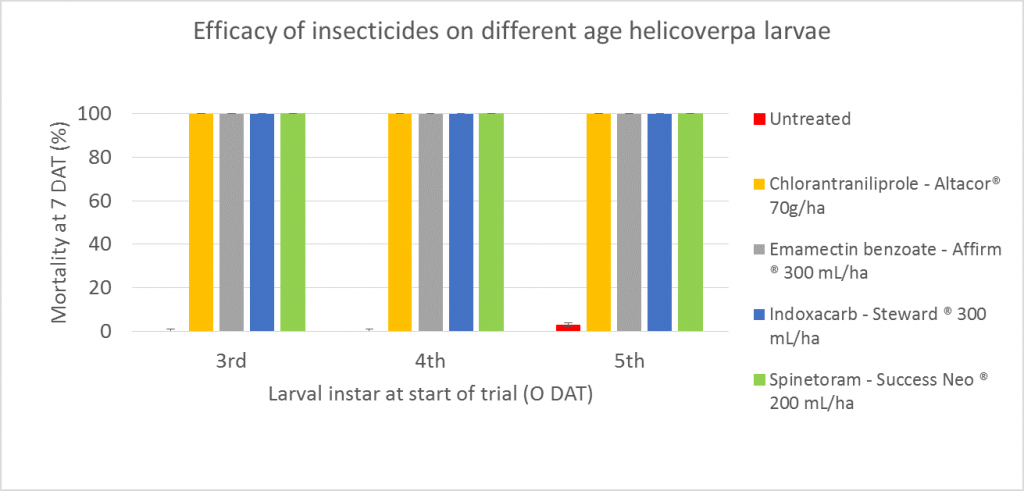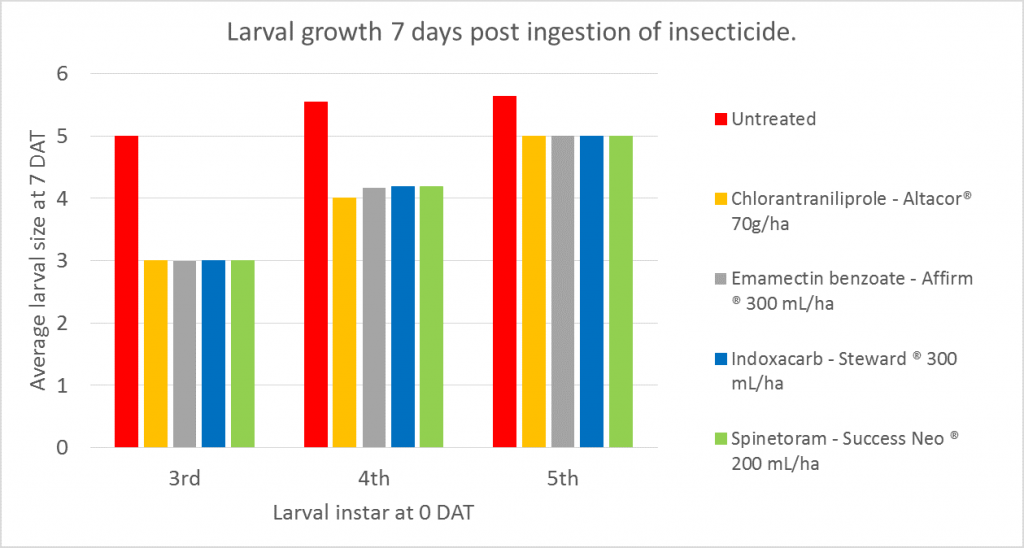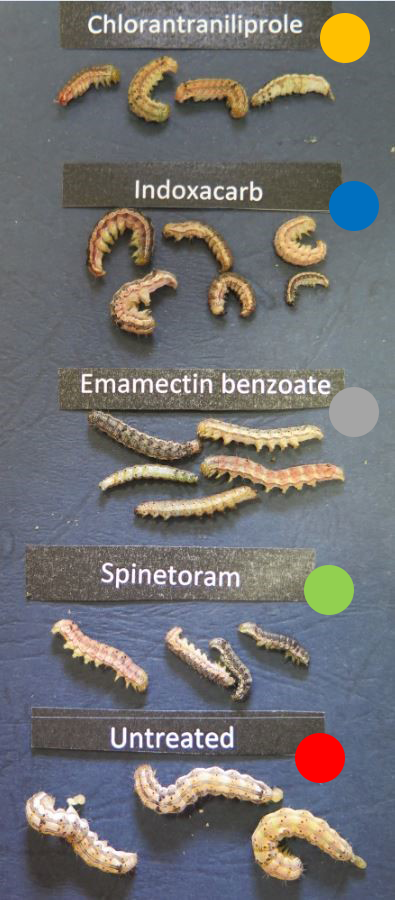As more growers and agronomists look to rotate insecticides for helicoverpa control in grain crops as part of a sound resistance management strategy, uncertainty about how to tell if larvae are actually dying, or had escaped control for some reason has emerged as a concern in some instances. These cases, where larvae have not died as quickly as expected, have made for a few nerve-wracking days post-treatment.
DAF entomology has looked at the efficacy of the range of newer insecticides in terms of both immediate ‘knockdown’ and their residual efficacy. This work was undertaken in order to give growers and agronomists the confidence to reduce their reliance on Altacor® and in so doing, reduce the selection pressure on this very valuable product.
We will be talking a lot more about insecticide resistance management in the grains industry in months to come.
A summary of the trials that looked at knockdown efficacy are presented below.
Insecticide impact on larval feeding and mortality
The replicated trials compared the following products:
- Altacor® (chlorantraniliprole) 70 g/ha + SpreadWet
- Affirm® (emamectin benzoate) 300 mL/ha + Pulse
- Steward® (indoxacarb) 300 mL/ha
- Success Neo® (spinetoram) 200 mL/ha
The efficacy of these products on small-medium (3rd instar) to large larvae (5th instar) was examined. In this trial, larvae were fed artificial diet impregnated with a field rate of product.
Results
The results were clear cut. All insecticides were equally efficacious (100% mortality) for all larval sizes. The final mortality assessment was made at 7 DAT (days after treatment), but the larvae stopped feeding and became moribund within 24 hours.
At 7 DAT we assessed the size of the larvae, and from these data it is clear that the larvae did very little, if any, feeding and consequently did not grow. Compare this with the untreated controls that progressed 1-2 instars* over the 7 days.
*Note: Helicoverpa larvae are capable of progressing to 6th instar before pupating. While this is easy to detect under laboratory conditions where shed larval skins are obvious, it is less noticeable in the field as the relative size difference between 5th and 6th is less than between other instars.
Visual signs of insecticide impact on larvae
One of the challenges with some of these products is that they do not result in larvae disappearing from the crop as quickly as older products. Finding larvae still in the crop 3-5 days post spraying is obviously concerning, particularly if the larvae are larger and potentially damaging. We know that these products take longer for the larvae to die and fall off the plants, but the data presented above shows that even 5th instar larvae that have fed on these products cease feeding, and therefore will not continue to damage the crop.
So how do you tell if the spray was successful? As part of this research, we also characterised the way the larvae look when they have ingested each of the products. In this trial, the larvae were fed treated leaf material for 12 hours.
The image below shows how Altacor®, Steward® and Success Neo® all cause the larvae to curl into a C-shape and/or start to contract lengthways. When the larvae to start to shrink they look ‘scrunched’ up. This is particularly noticeable in the larvae treated with Altacor® (yellow dot).
Affirm®-treated larvae (grey dot) do not curl or shrink, and other than being immobile, they look as if they are still alive. Because these larvae could be assumed to be alive, it would be good practice to examine larvae that fall on the beat sheet to see if they move away when they are touched. Moribund larvae (alive, but non-functioning) will move a little and respond to touch, but are incapable of walking or righting themselves if they are on their side or back.
Note: when using these pesticides, ensure you comply with all relevant label requirements (which may vary from state to state).
This research has been conducted as part of project DAQ00196, supported by GRDC.



